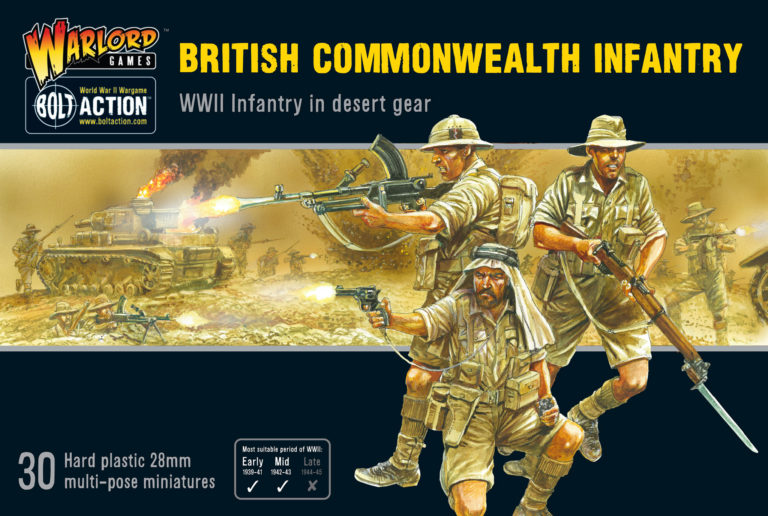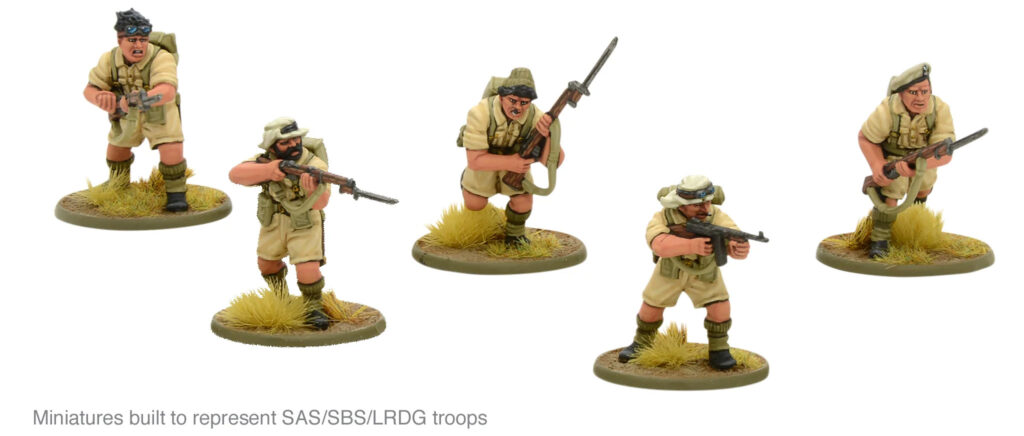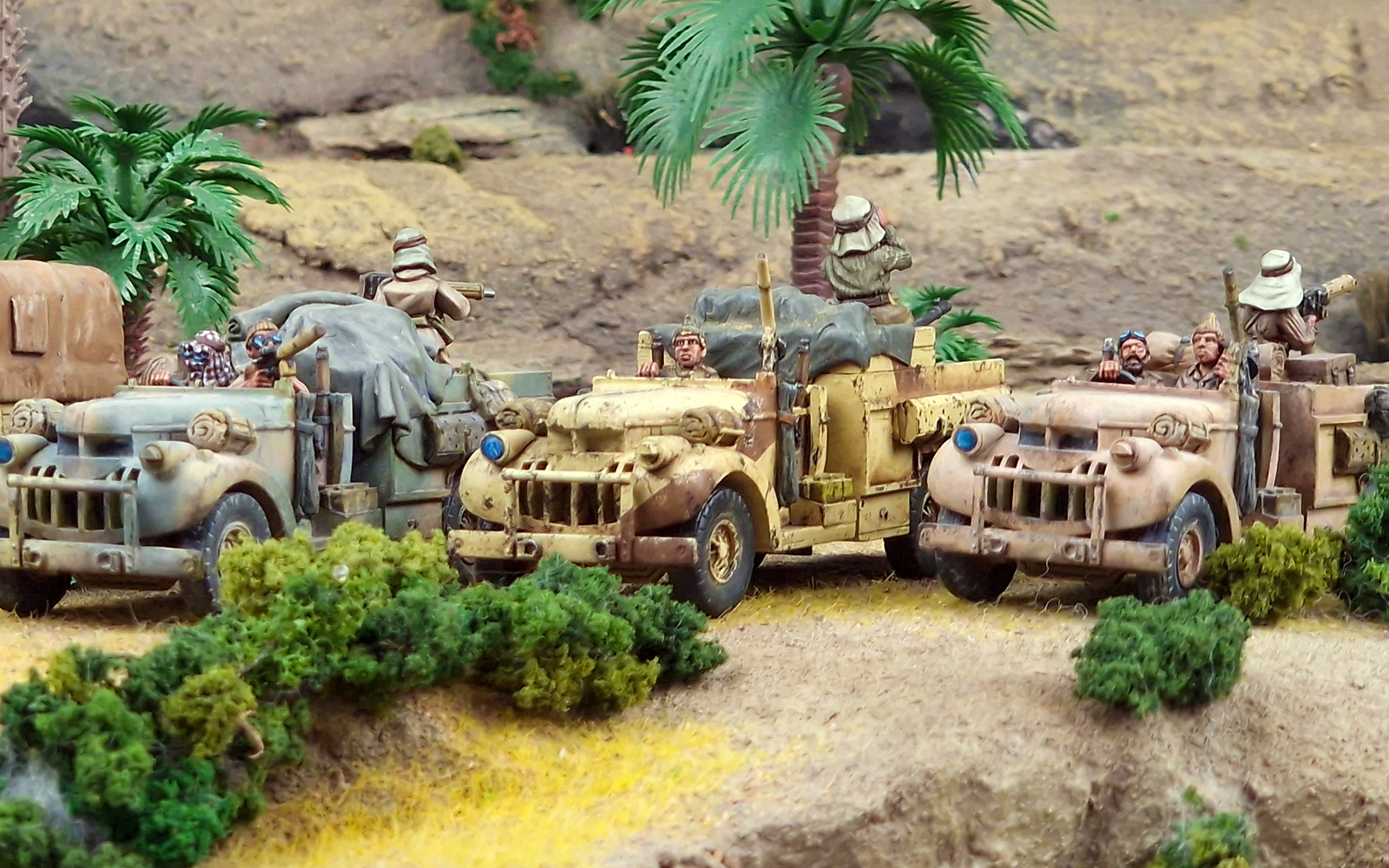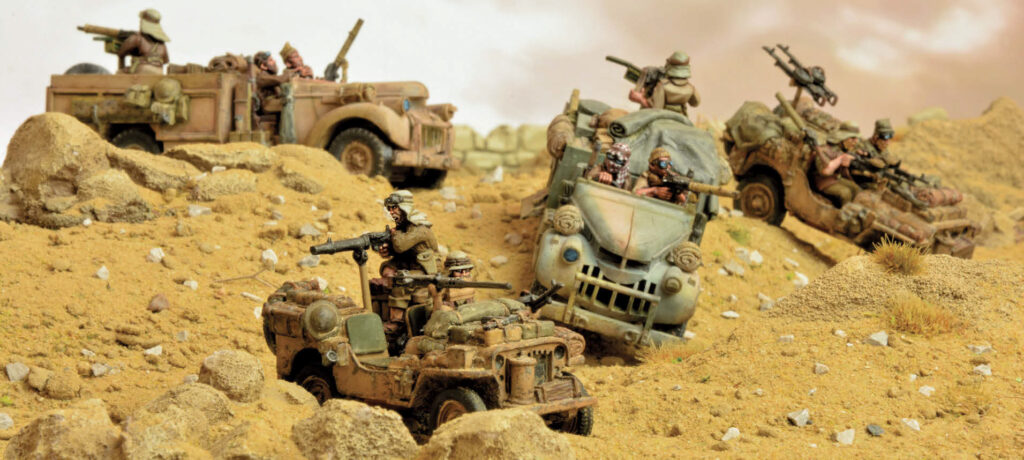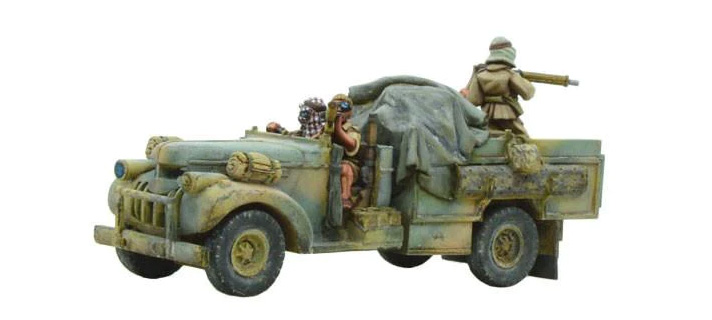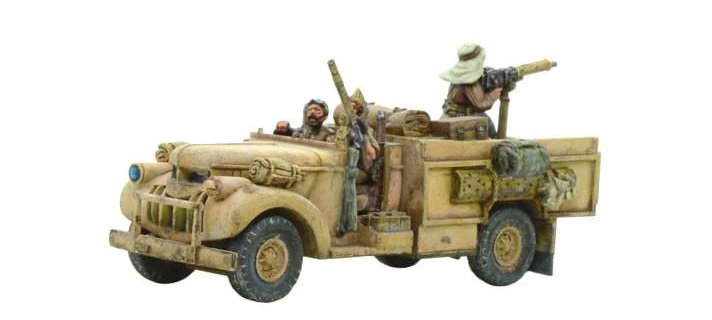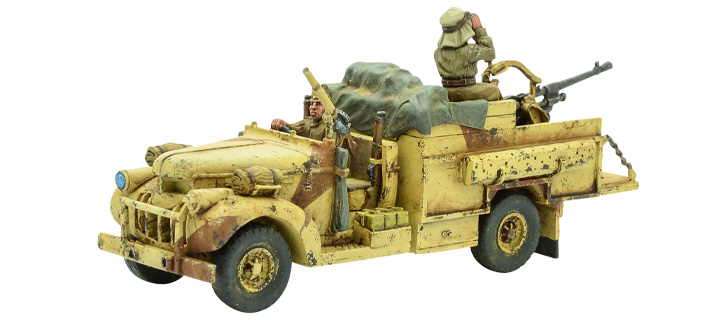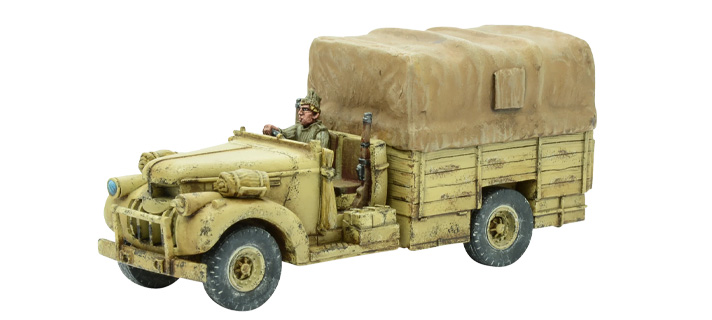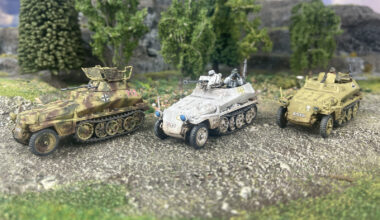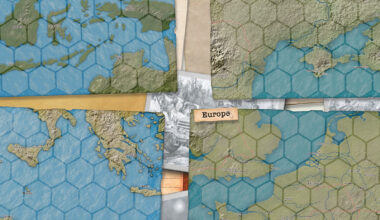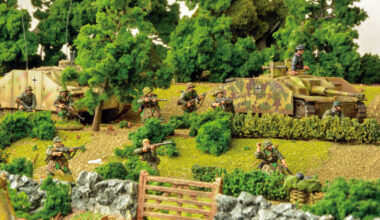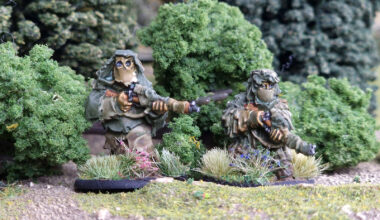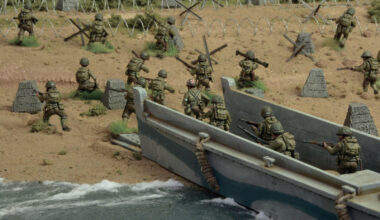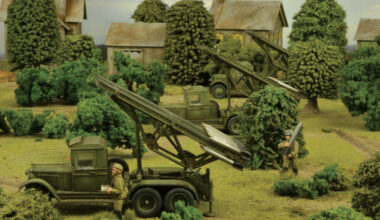Everyone is well aware of the exploits of the Special Air Service (SAS) in the Western Desert, but the first special forces unit to see action in the desert is rather less well-known. The Long Range Desert Group (LRDG) was originally founded as the Long Range Patrol in Egypt in 1940 by Major Ralph Bagnold, a famed pre-war explorer and pioneer of motorised desert expeditions – a pretty qualified chap for the job at hand! An all-volunteer unit comprising mostly New Zealanders, along with some British and South Rhodesian personnel, the formation was soon renamed as the LRDG. They operated in patrols of thirty men, subdivided into half-patrols, and were equipped with a variety of heavily modified trucks, mostly Chevrolet two-wheel drive models, and a large number of Lewis and Vickers machine guns, along with Boys anti-tank rifles and a 37mm anti-tank gun. Later, large numbers of surplus aircraft machine guns would be acquired from the RAF, and captured Italian equipment, particularly the 20mm Breda autocannon, was also used. As the war progressed, more and more equipment was issued, stolen, and otherwise procured, and while the number of personnel fluctuated, the unit never numbered more than 350 men.
Unlike the SAS, who were specifically a raiding force from their inception, the LRDG focussed instead on conducting reconnaissance far behind enemy lines over long periods of time, in some of the most inhospitable terrain in the world. Experts in desert navigation and survival, they could (and did) act as raiding parties when required, and also served to ferry the SAS across the desert – perhaps the role for which they are best known. Their primary duty, however, was reporting on Axis troop movements on the Tripoli to Benghazi road, from an angle and direction believed to be utterly impassable. They would see further service after the Western Desert campaign in Italy and Yugoslavia, and were disbanded at the war’s end, with their legacy surviving in the ‘Mobility Troops’ of the modern SAS.
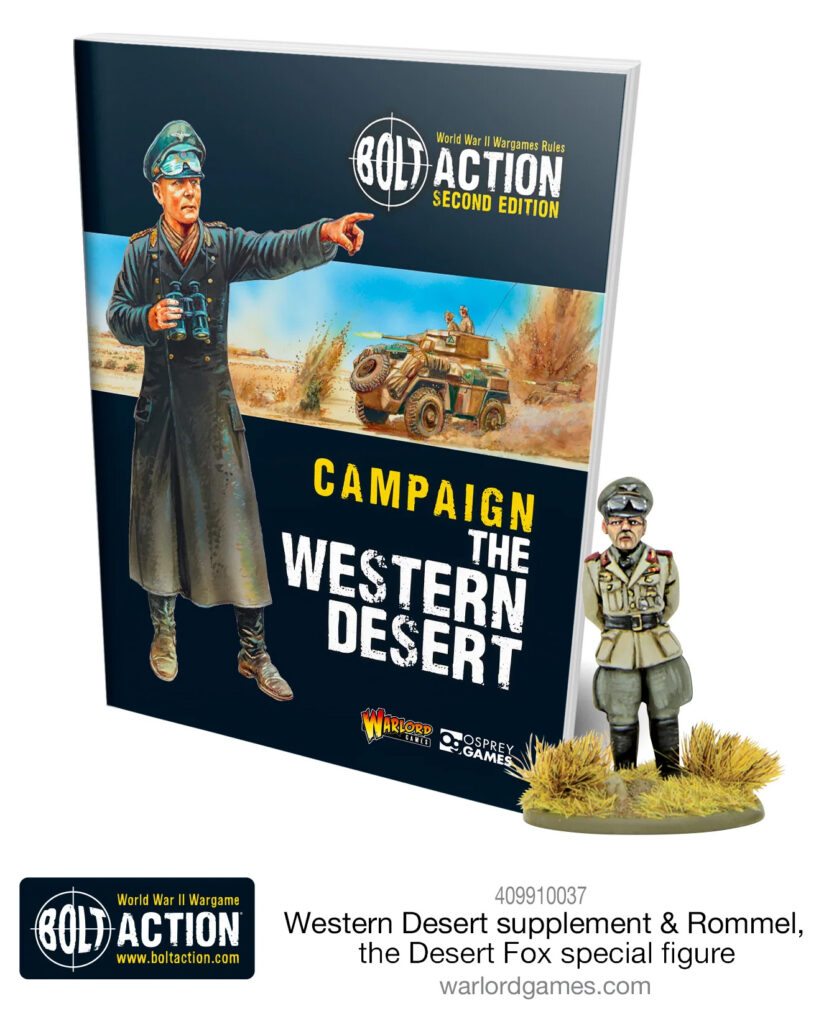
That’s a very (very) brief potted history of the LRDG, and further reading is definitely encouraged, but let’s go in-depth on how they perform in Bolt Action. Courtesy of Campaign: The Western Desert, they have a full (if concise) army list, and a pair of theatre selectors, one of which allows them to team up with the SAS. As we’ve already discussed the SAS at length, let’s look at the merits of fielding a purely LRDG army! First off, we can see they’ve got all the usual Western Desert special forces army rules, making them very difficult for your opponent to get to grips with, and ideal for a mobile, outflank-heavy playstyle. What is more, their infantry have a fantastic pair of special rules – Scouts lets them Forward Deploy which is always fun, and Timely Withdrawal can make it almost impossible to pull off a successful assault against them – ideal, given that you won’t have many of them! The selector we’re looking at, Perhaps a Bit of Piracy, is an interesting beast, as it’s technically an armoured platoon – albeit one comprised entirely of soft-skin vehicles and infantry!
At the core of the list are the mandatory Pilot Car and pair of gun trucks. The Pilot Car is your command vehicle, but for just under a hundred points can also pump out fifteen machine gun shots a turn! The Gun Trucks can mount even more machine gun goodness, as well as anti-tank rifles, although the Over-Gunned special rule keeps their firepower to a more reasonable level. Nevertheless, with between 2 and 4 of them per platoon, you’ll be laying down some seriously nasty levels of anti-infantry shooting, and a surprising amount of light anti-tank annoyance. There’s also the Bofors anti-tank gun-armed Support Truck. While the light AT gun is slightly awkwardly rear-facing (which may lead to some tactical reversing!), it’s certainly a handy bit of kit to have in the army, and like all LRDG trucks comes with a pintle-mounted MMG for brassing up anything in range.
The infantry component of an LRDG list is small but interestingly potent. The 3-man Foot Patrol teams don’t put out much offensive firepower (that’s what the trucks are for!), but with their special rules are a great way to frustrate your opponent and grab objectives late in the game. Similarly, the Light Mortar Team is a useful little unit, with its ability to fire smoke arguably its most useful attribute for this list. All infantry units must have a transport in this force, so enter the 30cwt Transport Truck, armed with (you guessed it!) more machine guns! With a transport capacity of ten, and the usual gamut of rules, you should only need one or two, and they provide yet more mobility and offensive punch to your army.
One of the great joys in collecting an LRDG force is in the conversions – you can (and should!) really go to town! Stowage, stowage, everywhere is the order of the day, and no two vehicles should look the same. Our Chevrolet trucks are the perfect starting point, with plenty of gear already included, but don’t be afraid to break out the bits box and go ham! For your infantry, the plastic Commonwealth boxed set has you absolutely covered, with all the unorthodox headwear and sensible shorts you could need. It’s never been simpler to represent the LRDG on the tabletop, and show those SAS players who the original special forces are (or get the best of both worlds and play a combined force of both)!
